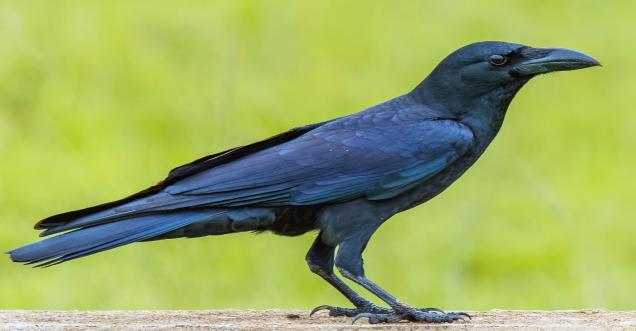
Why Crows Are as Smart as 7 Year Old Humans
Crows, and corvids in general (a family that includes crows, ravens, magpies, and jays), are often considered some of the most intelligent birds on the planet. Numerous studies have shown that they possess cognitive abilities, rivalling some primates and even young human children. Here's why crows are frequently compared in intelligence to 7-year-old humans:
-
Tool Use and Manufacture: Crows can use tools to get food and create tools from materials around them. For instance, New Caledonian crows have been observed shaping sticks into hooks to extract insects from crevices, a rare tool manufacturing level in the animal kingdom.
-
Problem Solving: In a series of famous experiments, crows solved a set of problems in succession to get to a food reward, demonstrating a level of causal reasoning. They could even understand the concept of water displacement, an idea human children begin to grasp around age 5 to 7.
-
Planning for the Future: While immediate needs drive many animals, crows can plan for the future. They are known for caching food in various locations and remembering these locations for later, demonstrating a sense of time and foresight.
-
Social Learning: Crows can learn by observing the behaviour of other crows, a trait called social learning. For example, if one crow sees another mistreated by a human, they might associate all humans with danger, illustrating both memory and the ability to generalize from specific events.
-
Recognizing Faces: Studies have shown that crows can recognize and remember individual human faces. If a person poses a threat to them, they can not only place that person but also communicate the threat to other crows.
-
Understanding Analogies: Crows have shown the ability to understand analogies, such as the relationship between colours or shapes, a cognitive trait once considered unique to humans.
-
Advanced Communication: Corvids have complex vocalizations and have even been observed using gestures, much like humans use hand gestures to communicate.
-
Adaptability: Crows thrive in various environments worldwide, from forests to urban landscapes. Their ability to adapt and exploit novel environments or situations shows their intelligence.
-
Play: Play is often linked with cognitive complexity. Young crows have been observed sliding down snowy roofs, playing games with other animals, and even playing "catch" with small objects, suggesting creativity and joy in exploration.
While comparing crow intelligence directly to human age-specific intelligence is challenging due to differences in evolutionary pressures and life experiences, it's evident that crows exhibit many cognitive traits that are impressive and surprisingly advanced. They remind us that intelligence in the animal kingdom is diverse and that birds, despite having small brains, can achieve remarkable cognitive feats.
How To Befriend A Crow
Befriending a crow can be a rewarding experience, given their intelligence and sociability. Here's a step-by-step guide to help you form a bond with these fascinating birds:
- Choose a Good Spot: Start by observing where crows frequent in your vicinity. A backyard, park, or other open areas are ideal.
- Consistency is Key: Crows have an excellent memory for human faces and habits. Visiting the same spot around the same time daily makes it easier for the crows to recognize and trust you.
- Offer Food: Food is the quickest way to a crow's heart.
- Safe Foods: Peanuts in the shell, cat or dog kibble, sunflower seeds, or other unsalted nuts are preferred.
- Avoid: Processed human food, especially salty or sugary snacks.
- Placement: Place food in the same spot each time. You can scatter it on the ground or use a flat, elevated platform like a bird table.
- Be Patient and Passive: Initially, stay still and maintain a distance, allowing the crows to approach the food when they feel safe. Over time, as they become used to your presence, they might come closer.
- Avoid Direct Eye Contact: In the early stages, direct eye contact can be seen as a threat. Use your peripheral vision to observe them.
- Speak Softly: If you talk to them, use a calm and gentle voice. This can help the crows get used to your presence and voice.
- Learn Their Calls: Crows have a range of vocalizations. By familiarising yourself with their calls, you can better understand their behaviour or moods.
- Avoid Sudden Movements: Quick or unexpected movements can scare them off. Move slowly and predictably.
- Cleanliness: If you're using a bird table or platform, ensure it's clean to prevent the spread of diseases.
- Respect Their Space: If a crow seems agitated or stressed, give it space. Remember, the goal is to build trust.
- Gifts: Crows have been known to bring 'gifts' to humans they like—small trinkets, shiny objects, or even dead prey. If you find such items left in the area you feed them, it's a good sign they've warmed up to you.
- Protect the Relationship: Ensure that other humans or pets in your household or vicinity don't disturb or threaten the crows, as this can damage the trust you've built.
Building a relationship with wild animals, including crows, takes time and patience. While only some crows might become friendly, with consistent effort, it's possible to forge a unique bond with these intelligent birds.






















